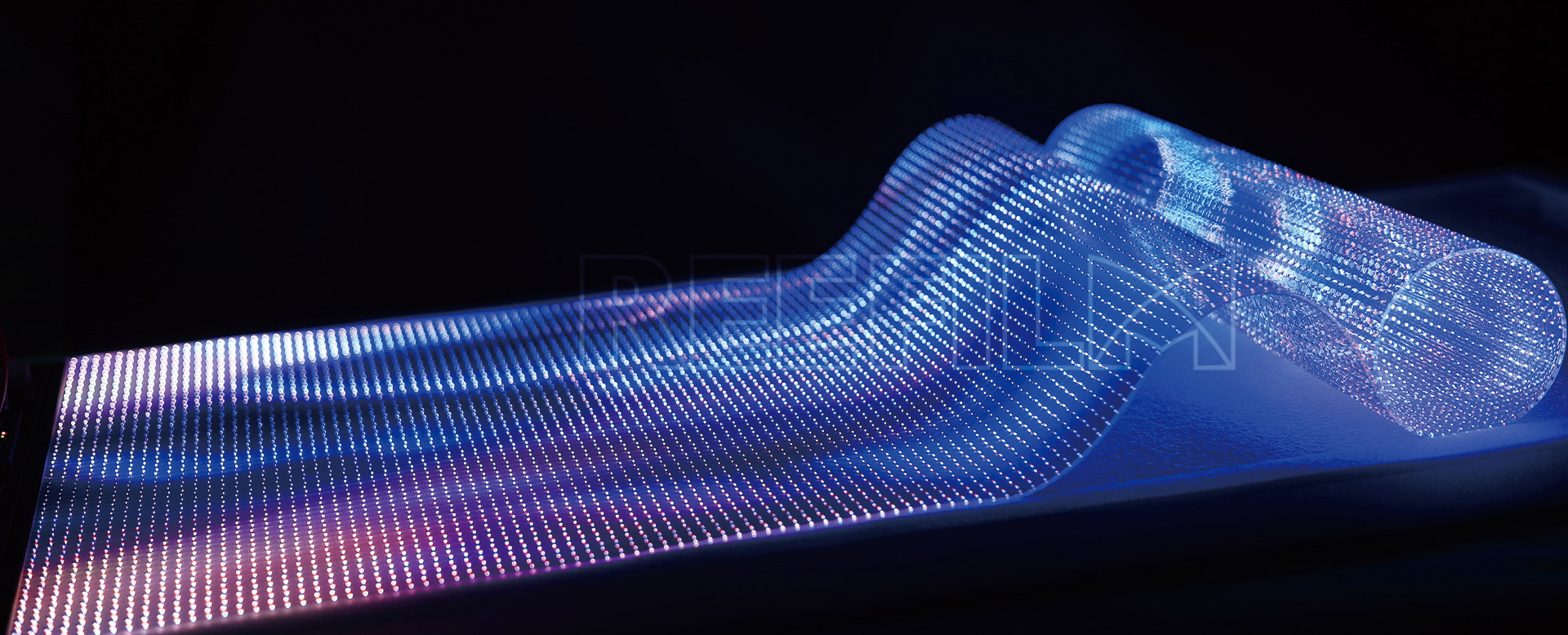
A Soft LED Screen is a flexible display technology that utilizes light-emitting diodes (LEDs) mounted on a pliable substrate, typically made of materials like polyimide or silicone. Unlike traditional rigid Led Displays, soft LED screens can bend, curve, or even fold while maintaining optimal performance. These displays offer high brightness levels (typically 5,000-10,000 nits), wide viewing angles (160-178 degrees), and excellent color gamut coverage (≥90% NTSC). The pixel pitch can range from P1.2 to P10 depending on application requirements, with refresh rates exceeding 3840Hz for smooth video playback.
Key technical specifications of modern soft LED screens:
Flexibility: Can bend to radii as small as 50mm without damage
Brightness: 5,000-10,000 nits (adjustable for indoor/outdoor use)
Contrast ratio: ≥5000:1 for vivid image quality
Power consumption: 200-500W/m² depending on brightness
Operating temperature: -30°C to +60°C
IP rating: Typically IP65 for outdoor models
The unique characteristics of soft LED screens enable their use in diverse environments:
Soft LED screens can conform to curved building facades with radii up to 90 degrees, creating seamless media surfaces. The ultra-thin profile (as little as 3mm thickness) allows for discreet installation on historical buildings where preservation guidelines prohibit heavy modifications.
With color consistency (ΔE<3) across the entire display surface, soft LED screens provide uniform brand representation. The modular design enables custom shapes that can wrap around product displays or create immersive brand tunnels.
The fast response time (<1ms) eliminates motion blur for live performances. Screens can be rolled or folded for transport, reducing logistics costs by up to 60% compared to rigid panels. Some models offer transparent options (up to 70% transparency) for special effects.
At airports and train stations, soft LED displays withstand constant vibrations while maintaining image stability. Their wide operating temperature range ensures reliability in various climates.
Emerging applications include curved dashboard displays with 8K resolution and local dimming zones (up to 10,000 zones per m²) for superior contrast in sunlight.
Proper care extends the lifespan of soft LED screens beyond their typical 100,000-hour operational life:
Use anti-static microfiber cloths with isopropyl alcohol (70% concentration) for surface cleaning. For outdoor installations, perform bi-weekly cleaning to maintain optimal brightness. Avoid abrasive cleaners that could damage the protective coating (typically 3H hardness rating).
When not in use for extended periods, store screens rolled on minimum 300mm diameter cores in environments with 40-60% humidity at 15-25°C. Use anti-moisture bags with desiccant packs for humidity control.
Implement automatic brightness adjustment (50-100% range) based on ambient light to reduce power consumption and heat generation. Maintain stable voltage (220V ±5%) with UPS backup for critical installations.
For outdoor units, inspect sealing gaskets quarterly and replace if hardness exceeds Shore A 70. Apply UV-resistant coating annually in high-sunlight regions to prevent yellowing of the surface material.
Run pixel-refreshing cycles (every 500 hours) to equalize LED aging. Most systems include automatic compensation algorithms that adjust drive currents to maintain brightness uniformity within ±5% across the display.
Previous: Transparent Led Display Board